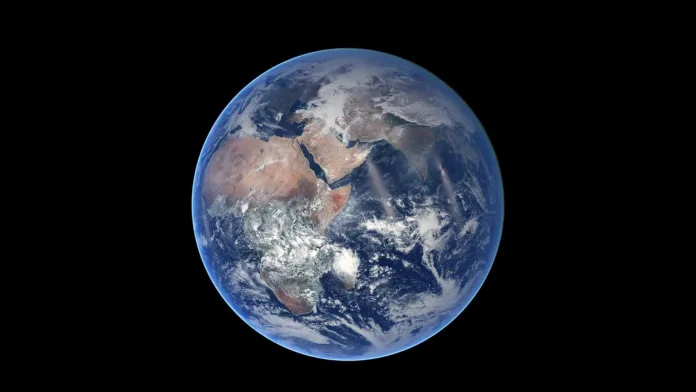The hunt for habitable worlds has become a hot topic in astronomy. For decades, the search has been focussed on planets in the “Goldilocks zone”; that narrow band around a star where water stays liquid, not too hot to boil away, not too cold to freeze solid. But habitability is far more complex and ruthless than just getting the temperature right. A world needs a protective magnetic field to shield life from radiation, a stable atmosphere thick enough to regulate climate but not so dense it crushes everything beneath it, and the right cocktail of elements forged in the nuclear furnaces of dying stars.
 Artists impression of Barnard’s exoplanet.
Artists impression of Barnard’s exoplanet.
McCullen Sandora from the Blue Marble Space Institute of Science in Seattle has developed an ingenious new approach to gauge the habitability of exotic worlds by considering Earth’s location as a statistical sample. The logic is simple; if we assume we’re not ‘special,’ then our presence around a particular type of star tells us something about how conducive different stellar environments are to life.
Consider this: red dwarf stars outnumber yellow stars like our Sun by a ratio of 7 to 3 in our galaxy. If red dwarf systems were significantly better at hosting life—say, more than 8.1 times as habitable as yellow star systems—then our existence around a yellow star would be a statistical fluke, occurring less than 5% of the time. Since we’re here, orbiting a yellow star, this suggests red dwarfs can’t be dramatically more habitable than our solar system.
 Hubble image of Proxima Centauri (Credit : ESA/Hubble)
Hubble image of Proxima Centauri (Credit : ESA/Hubble)
But here’s where things get really interesting; Sandora postulates that if multiple universes exist with vastly different cosmic recipes, this statistical approach becomes exponentially more powerful. In a multiverse scenario, the relative abundances of different planetary environments could vary drastically between universes. Some might be packed with rogue planets drifting through the void, others dominated by water worlds or tidally locked planets in binary systems.
This cosmic diversity creates a natural laboratory for testing habitability. Sandora has applied this multiverse reasoning to examine everything from icy moons and rogue planets to alien oceans made of substances other than water. The results are striking: the statistical bounds on the relative habitability of rogue planets and water worlds become at least ten times stronger when considered across multiple universes rather than just our own.
Perhaps most interestingly, the approach even challenges our assumptions about water’s supposed uniqueness for life. We often assume that water’s special properties—like ice floating instead of sinking, or its role as a “universal solvent”—are essential for biology. But if the multiverse hypothesis is correct, and life consistently chooses water-based environments across countless variations of the universe, then these properties might not be as crucial as we think.
If future discoveries reveal that exotic environments are far more habitable than previously thought, if we find rogue planets teeming with life or discover that alternative biochemistries vastly outperform water-based life then it would shatter the multiverse framework with high confidence.
Sandora’s research might seem unremarkable, but it could be the key to unlocking one of the biggest questions in science: Are we alone in a single universe, or are we one data point among infinite universes?
Source : Multiverse Predictions for Habitability: The Habitability of Exotic Environments


